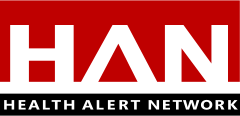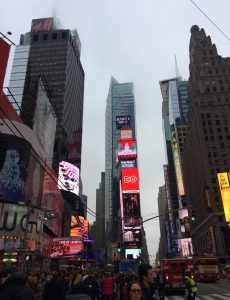Archive for the ‘First Responders’ Category
BBC: A breakdown in communication led to a near two-hour delay in sending fire crews to the scene of the Manchester Arena attack on May 22.
Sunday, November 12th, 2017Fire crews were deployed to the Ariana Grande gig 1 hour 47 minutes after Salman Abedi killed 22 and injured 512.
“…..The BBC understands the document includes:
- County Fire Officer Pete O’Reilly was not informed the bomb had gone off for 35 minutes
- Fire brigade bosses followed protocol by not deploying crews due to the potential risk of a second terrorist incident
- The brigade claims it did not know until nearly two hours after the attack that the threat had been lifted….”
CDC recommendations to healthcare providers treating patients in Puerto Rico and USVI, as well as those treating patients in the continental US who recently traveled in hurricane-affected areas during the period of September 2017 – March 2018.
Wednesday, October 25th, 2017Advice for Providers Treating Patients in or Recently Returned from Hurricane-Affected Areas, Including Puerto Rico and US Virgin Islands
Distributed via the CDC Health Alert Network
October 24, 2017, 1330 ET (1:30 PM ET)
CDCHAN-00408
Summary
The Centers for Disease Control and Prevention (CDC) is working with federal, state, territorial, and local agencies and global health partners in response to recent hurricanes. CDC is aware of media reports and anecdotal accounts of various infectious diseases in hurricane-affected areas, including Puerto Rico and the US Virgin Islands (USVI). Because of compromised drinking water and decreased access to safe water, food, and shelter, the conditions for outbreaks of infectious diseases exist.
The purpose of this HAN advisory is to remind clinicians assessing patients currently in or recently returned from hurricane-affected areas to be vigilant in looking for certain infectious diseases, including leptospirosis, dengue, hepatitis A, typhoid fever, vibriosis, and influenza. Additionally, this Advisory provides guidance to state and territorial health departments on enhanced disease reporting.
Background
Hurricanes Irma and Maria made landfall in Puerto Rico and USVI in September 2017, causing widespread flooding and devastation. Natural hazards associated with the storms continue to affect many areas. Infectious disease outbreaks of diarrheal and respiratory illnesses can occur when access to safe water and sewage systems are disrupted and personal hygiene is difficult to maintain. Additionally, vector borne diseases can occur due to increased mosquito breeding in standing water; both Puerto Rico and USVI are at risk for outbreaks of dengue, Zika, and chikungunya.
Health care providers and public health practitioners should be aware that post-hurricane environmental conditions may pose an increased risk for the spread of infectious diseases among patients in or recently returned from hurricane-affected areas; including leptospirosis, dengue, hepatitis A, typhoid fever, vibriosis, and influenza. The period of heightened risk may last through March 2018, based on current predictions of full restoration of power and safe water systems in Puerto Rico and USVI.
In addition, providers in health care facilities that have experienced water damage or contaminated water systems should be aware of the potential for increased risk of infections in those facilities due to invasive fungi, nontuberculous Mycobacterium species, Legionella species, and other Gram-negative bacteria associated with water (e.g., Pseudomonas), especially among critically ill or immunocompromised patients.
Cholera has not occurred in Puerto Rico or USVI in many decades and is not expected to occur post-hurricane.
Recommendations
These recommendations apply to healthcare providers treating patients in Puerto Rico and USVI, as well as those treating patients in the continental US who recently traveled in hurricane-affected areas (e.g., within the past 4 weeks), during the period of September 2017 – March 2018.
- Health care providers and public health practitioners in hurricane-affected areas should look for community and healthcare-associated infectious diseases.
- Health care providers in the continental US are encouraged to ask patients about recent travel (e.g., within the past 4 weeks) to hurricane-affected areas.
- All healthcare providers should consider less common infectious disease etiologies in patients presenting with evidence of acute respiratory illness, gastroenteritis, renal or hepatic failure, wound infection, or other febrile illness. Some particularly important infectious diseases to consider include leptospirosis, dengue, hepatitis A, typhoid fever, vibriosis, and influenza.
- In the context of limited laboratory resources in hurricane-affected areas, health care providers should contact their territorial or state health department if they need assistance with ordering specific diagnostic tests.
- For certain conditions, such as leptospirosis, empiric therapy should be considered pending results of diagnostic tests— treatment for leptospirosis is most effective when initiated early in the disease process. Providers can contact their territorial or state health department or CDC for consultation.
- Local health care providers are strongly encouraged to report patients for whom there is a high level of suspicion for leptospirosis, dengue, hepatitis A, typhoid, and vibriosis to their local health authorities, while awaiting laboratory confirmation.
- Confirmed cases of leptospirosis, dengue, hepatitis A, typhoid fever, and vibriosis should be immediately reported to the territorial or state health department to facilitate public health investigation and, as appropriate, mitigate the risk of local transmission. While some of these conditions are not listed as reportable conditions in all states, they are conditions of public health importance and should be reported.
For More Information
- General health information about hurricanes and other tropical storms: https://www.cdc.gov/disasters/hurricanes/index.html
- Information about Hurricane Maria: https://www.cdc.gov/disasters/hurricanes/hurricane_maria.html
- Information for Travelers:
- Travel notice for Hurricanes Irma and Maria in the Caribbean: https://wwwnc.cdc.gov/travel/notices/alert/hurricane-irma-in-the-caribbean
- Health advice for travelers to Puerto Rico: https://wwwnc.cdc.gov/travel/destinations/traveler/none/puerto-rico?s_cid=ncezid-dgmq-travel-single-001
- Health advice for travelers to the U.S. Virgin Islands: https://wwwnc.cdc.gov/travel/destinations/traveler/none/usvirgin-islands?s_cid=ncezid-dgmq-travel-leftnav-traveler
- Resources from CDC Health Information for International Travel 2018 (the Yellow Book):
- Post-travel Evaluation: https://wwwnc.cdc.gov/travel/yellowbook/2018/post-travel-evaluation/general-approach-to-the-returned-traveler
- Information about infectious diseases after a disaster: https://www.cdc.gov/disasters/disease/infectious.html
- Dengue: https://www.cdc.gov/dengue/index.html
- Hepatitis A: https://www.cdc.gov/hepatitis/HAV/index.htm
- Leptospirosis: https://www.cdc.gov/leptospirosis/
- Typhoid fever: https://www.cdc.gov/typhoid-fever/index.html
- Vibriosis: https://www.cdc.gov/vibrio/index.html
- Information about other infectious diseases of concern:
- Conjunctivitis: https://www.cdc.gov/conjunctivitis/
- Influenza: https://www.cdc.gov/flu/index.htm
- Scabies: https://www.cdc.gov/parasites/scabies/index.html
- Tetanus and wound management: https://www.cdc.gov/disasters/emergwoundhcp.html
- Tetanus in Areas Affected by a Hurricane: Guidelines for Clinicians https://emergency.cdc.gov/coca/cocanow/2017/2017sept12.asp
Paramedics, Stress & the Las Vegas Mass Shooting
Saturday, October 21st, 2017“…..Weber said the green-tagged patients had minor injuries, the yellow-tagged patients had non-life-threatening injuries, and those with red tags needed to be transported to the hospital immediately. The black-tagged individuals were expected to die.
“We had to take the red-tagged patients first,” Weber said. “But it’s not always that easy. People were begging me to take them because they were in so much pain. One woman grabbed at my ankle and we locked eyes. All she could say was ‘please.’ She had tears all over her face. But she was tagged in yellow, and there were people in red. So I had to say, ‘I’m so sorry. Someone will be back for you soon.’”
Weber said patients were growing more desperate on their second round of pickups.
“They’d been waiting for maybe 20-30 minutes at that point, and they’re hurt and they’re bleeding,” Weber said. “So as you walked past them, they’d be like, ‘Help me, please. Help me.’ There was a man tagged yellow who said, ‘I have a new baby. Please save me.’”
“There were officers helping us triage, but there was still some discretion,” Weber added. “Do I pick up this red tag or that red tag? Which patient do we take? What if we choose the wrong one? It can be agonizing.”
Weber said that patients with green tags suffered injuries such as broken limbs and waited for hours to be transported to the hospital. He added that some of the green patients were with people who had already been transported to the hospital and had no idea if their loved ones were alive or dead…..”
Las Vegas’ trie first responders: Volunteers combed the grounds for survivors and carried out the injured. Strangers used belts as makeshift tourniquets to stanch bleeding, and then others sped the wounded to hospitals in the back seats of cars and the beds of pickup trucks.
Monday, October 16th, 2017https://www.youtube.com/watch?v=pETJDaInZ2w
Triage in Las Vegas
Thursday, October 5th, 2017“…..The injured had been tagged with color-coded stickers on their bodies by a first responder team doing triage. Patients tagged in green had minor injuries. Those with yellow tags had non-life threatening injuries. A red tag meant that the patient had life-threatening injuries and needed to be transported immediately to a hospital. Those tagged in black were dying or expecting to die.
“We had to take the red-tagged patients first,” he says. “But it’s not always that easy. People were begging me to take them because they were in so much pain. One woman grabbed at my ankle and we locked eyes. All she could say was ‘please.’ She had tears all over her face. But she was tagged in yellow, and there were people in red. So I had to say, ‘I’m so sorry. Someone will be back for you soon.’
There was another man who was tagged green sitting next to a yellow,” he continues. “He said, ‘please help my girlfriend,’ but I couldn’t.”
The first patient they took was a woman with a gunshot wound to the chest. “She wasn’t able to breathe,” he says. “She was in really bad condition. We took her to the [ambulance] and to the hospital. Dispatch told us to go right back for more patients.”
He does not know if the woman survived or not…..”
Las Vegas: Dodging bullets, first responders respond to a crisis
Wednesday, October 4th, 2017“……At the medical tent, people lay everywhere. He saw his medical technicians applying pressure to chest and leg wounds, using tourniquets to try to stop the bleeding.
“I saw my personnel checking for pulses, realizing the person did not have a pulse, and we literally had to push the body out of the tent and make room for another patient,” he said.
People Mr. Simpson assumed were family members or friends begged the medical workers to perform CPR. But they were following principles of disaster triage, which, in the most extreme circumstances, call for bypassing those whose hearts have already stopped. So in some cases, family members began CPR themselves…..”
NYC is home to 700,000 Puerto Ricans & what are they doing about Puerto Rico?
Thursday, September 28th, 2017“…..Gov. Andrew M. Cuomo announced the launch of the Empire State Relief and Recovery Effort for Puerto Rico, and Mayor Bill de Blasio sent emergency workers to the island to provide aid.
There are now more than 140 city personnel on the ground in Puerto Rico.
Among them: New York Task Force One, our urban search and rescue team; workers from the city’s Buildings Department who have expertise in inspections; members of our Police and Fire Departments who specialize in structural collapses and water rescues; and members of both departments’ Hispanic societies…..”
Wilson County, NC & Hurricane Matthew: The Aftermath
Saturday, November 12th, 2016
Nov 10, 2016
By Olivia Neeley
The Wilson Daily Times
- More than 530 Wilson County residents registered with the Federal Emergency Management Agency for assistance after Hurricane Matthew
- The 530-plus individuals FEMA assisted received more than $640,000 disbursement in funds countywide.
- The 911 Communications Center received 2,500 calls for service over the three-day period during and after Hurricane Matthew.
- There were roughly 230 water rescues performed during the height of the storm, most of which were vehicles rescues and getting people out of houses that were threatened by water.
- Two people were also killed in Wilson County as a result of moving water in the roadways. Their vehicles were swept away.





